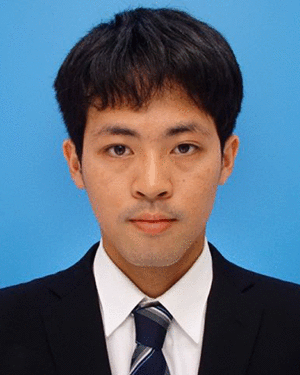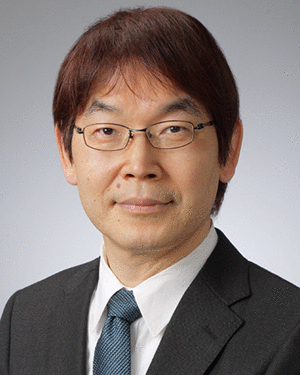Abstract:
This article introduces a novel system designed to convey the three-dimensional positions surrounding the user. The system incorporates circumferential vibrotactile array...Show MoreMetadata
Abstract:
This article introduces a novel system designed to convey the three-dimensional positions surrounding the user. The system incorporates circumferential vibrotactile arrays strategically positioned on both the user's head and waist. Through the synergy of this two-dimensional arrangement and modulations in vibration amplitude, the system adeptly presents comprehensive three-dimensional positional information. Two prototypes, namely a spherical model and a cylindrical model, were employed as mappings between three-dimensional positions and vibration amplitudes. In Experiment 1, we evaluated the system's performance in indicating positions in depth, orientation, and height. Notably, discrimination rates for depth (Task 1) and orientation (Task 2) were 60% and 54%, respectively. Regarding height discrimination in the head-to-waist condition (Tasks 3 and 4), the cylindrical model outperformed the spherical model (54% and 52% vs. 32% and 36%). Conversely, in the head-above and waist-below condition (Task 5), the cylindrical model achieved a discrimination rate of 45%, while the spherical model did not. In Experiment 2, we explored the use of the cylindrical model to convey a moving three-dimensional position. The results showed an impressive 81% correct response rate, affirming the system's effectiveness in presenting three-dimensional motion stimuli.
Published in: IEEE Transactions on Haptics ( Volume: 17, Issue: 3, July-Sept. 2024)
Funding Agency:

Department of Mechanical Engineering, Kobe University, Kobe, Japan
Syunsuke Tawa received the B.S. and M.S. degrees in engineering from Kobe University, Kobe, Japan, in 2020 and 2022, respectively. His research interests include human-machine interfaces using multiple vibrotactile dusplay.
Syunsuke Tawa received the B.S. and M.S. degrees in engineering from Kobe University, Kobe, Japan, in 2020 and 2022, respectively. His research interests include human-machine interfaces using multiple vibrotactile dusplay.View more

Department of Mechanical Engineering, Kobe University, Kobe, Japan
Hikaru Nagano (Member, IEEE) received B.S., M.S., and Ph.D. degrees in engineering from Nagoya University, Nagoya, Japan, in 2010, 2012, and 2015, respectively. From 2015 to 2018, he was an Assistant Professor of Tohoku University, Sendai, Japan. Since 2018, he has been an Assistant Professor of the Graduate School of Engineering, Kobe University, Kobe, Japan. His research interests include human haptic perception and hum...Show More
Hikaru Nagano (Member, IEEE) received B.S., M.S., and Ph.D. degrees in engineering from Nagoya University, Nagoya, Japan, in 2010, 2012, and 2015, respectively. From 2015 to 2018, he was an Assistant Professor of Tohoku University, Sendai, Japan. Since 2018, he has been an Assistant Professor of the Graduate School of Engineering, Kobe University, Kobe, Japan. His research interests include human haptic perception and hum...View more

Department of Mechanical Engineering, Kobe University, Kobe, Japan
Yuichi Tazaki (Member, IEEE) received the Dr.Eng. degree in control engineering from the Tokyo Institute of Technology, Tokyo, Japan, in 2008. From 2007 to 2009, he was a Research Fellow of Japan Society for the Promotion of Science. In 2008, he was a Guest Scientist of Honda Research Institute Europe, Germany. From 2009 to 2016, he was an Assistant Professor of Nagoya University, Nagoya, Japan. Since 2016, he has been an...Show More
Yuichi Tazaki (Member, IEEE) received the Dr.Eng. degree in control engineering from the Tokyo Institute of Technology, Tokyo, Japan, in 2008. From 2007 to 2009, he was a Research Fellow of Japan Society for the Promotion of Science. In 2008, he was a Guest Scientist of Honda Research Institute Europe, Germany. From 2009 to 2016, he was an Assistant Professor of Nagoya University, Nagoya, Japan. Since 2016, he has been an...View more

Department of Mechanical Engineering, Kobe University, Kobe, Japan
Yasuyoshi Yokokohji (Senior Member, IEEE) received the B.S. and M.S. degrees in precision engineering, and the Ph.D. degree in mechanical engineering from Kyoto University, Kyoto, Japan, in 1984, 1986, and 1991, respectively. From 1988 to 1989, he was a Research Associate with Automation Research Laboratory, Kyoto University. From 1989 to 1992, he was a Research Associate with the Division of Applied Systems Science, Facu...Show More
Yasuyoshi Yokokohji (Senior Member, IEEE) received the B.S. and M.S. degrees in precision engineering, and the Ph.D. degree in mechanical engineering from Kyoto University, Kyoto, Japan, in 1984, 1986, and 1991, respectively. From 1988 to 1989, he was a Research Associate with Automation Research Laboratory, Kyoto University. From 1989 to 1992, he was a Research Associate with the Division of Applied Systems Science, Facu...View more

Department of Mechanical Engineering, Kobe University, Kobe, Japan
Syunsuke Tawa received the B.S. and M.S. degrees in engineering from Kobe University, Kobe, Japan, in 2020 and 2022, respectively. His research interests include human-machine interfaces using multiple vibrotactile dusplay.
Syunsuke Tawa received the B.S. and M.S. degrees in engineering from Kobe University, Kobe, Japan, in 2020 and 2022, respectively. His research interests include human-machine interfaces using multiple vibrotactile dusplay.View more

Department of Mechanical Engineering, Kobe University, Kobe, Japan
Hikaru Nagano (Member, IEEE) received B.S., M.S., and Ph.D. degrees in engineering from Nagoya University, Nagoya, Japan, in 2010, 2012, and 2015, respectively. From 2015 to 2018, he was an Assistant Professor of Tohoku University, Sendai, Japan. Since 2018, he has been an Assistant Professor of the Graduate School of Engineering, Kobe University, Kobe, Japan. His research interests include human haptic perception and human-machine interfaces. He is a member of VRSJ and RSJ.
Hikaru Nagano (Member, IEEE) received B.S., M.S., and Ph.D. degrees in engineering from Nagoya University, Nagoya, Japan, in 2010, 2012, and 2015, respectively. From 2015 to 2018, he was an Assistant Professor of Tohoku University, Sendai, Japan. Since 2018, he has been an Assistant Professor of the Graduate School of Engineering, Kobe University, Kobe, Japan. His research interests include human haptic perception and human-machine interfaces. He is a member of VRSJ and RSJ.View more

Department of Mechanical Engineering, Kobe University, Kobe, Japan
Yuichi Tazaki (Member, IEEE) received the Dr.Eng. degree in control engineering from the Tokyo Institute of Technology, Tokyo, Japan, in 2008. From 2007 to 2009, he was a Research Fellow of Japan Society for the Promotion of Science. In 2008, he was a Guest Scientist of Honda Research Institute Europe, Germany. From 2009 to 2016, he was an Assistant Professor of Nagoya University, Nagoya, Japan. Since 2016, he has been an Associate Professor of Kobe University, Kobe, Japan. His research interests include autonomous vehicles, mobile robots, and humanoid robots. He is a member of SICE and RSJ.
Yuichi Tazaki (Member, IEEE) received the Dr.Eng. degree in control engineering from the Tokyo Institute of Technology, Tokyo, Japan, in 2008. From 2007 to 2009, he was a Research Fellow of Japan Society for the Promotion of Science. In 2008, he was a Guest Scientist of Honda Research Institute Europe, Germany. From 2009 to 2016, he was an Assistant Professor of Nagoya University, Nagoya, Japan. Since 2016, he has been an Associate Professor of Kobe University, Kobe, Japan. His research interests include autonomous vehicles, mobile robots, and humanoid robots. He is a member of SICE and RSJ.View more

Department of Mechanical Engineering, Kobe University, Kobe, Japan
Yasuyoshi Yokokohji (Senior Member, IEEE) received the B.S. and M.S. degrees in precision engineering, and the Ph.D. degree in mechanical engineering from Kyoto University, Kyoto, Japan, in 1984, 1986, and 1991, respectively. From 1988 to 1989, he was a Research Associate with Automation Research Laboratory, Kyoto University. From 1989 to 1992, he was a Research Associate with the Division of Applied Systems Science, Faculty of Engineering, Kyoto University. From 1992 to 2005, he was an Associate Professor with the Department of Mechanical Engineering, Kyoto University. From 2005 to 2009, he was an Associate Professor with the Department of Mechanical Engineering and Science, Graduate School of Engineering, Kyoto University. From 1994 to 1996, he was a Visiting Research Scholar with Robotics Institute, Carnegie Mellon University, Pittsburgh, PA, USA. Since 2009, he has been a Professor with the Department of Mechanical Engineering, Graduate School of Engineering, Kobe University, Kobe, Japan. His current research interests include robotics and virtual reality including teleoperation systems, robot hands, and haptic interfaces. He is a Fellow of RSJ, JSME, and SICE, and a Member of ISCIE and VRSJ.
Yasuyoshi Yokokohji (Senior Member, IEEE) received the B.S. and M.S. degrees in precision engineering, and the Ph.D. degree in mechanical engineering from Kyoto University, Kyoto, Japan, in 1984, 1986, and 1991, respectively. From 1988 to 1989, he was a Research Associate with Automation Research Laboratory, Kyoto University. From 1989 to 1992, he was a Research Associate with the Division of Applied Systems Science, Faculty of Engineering, Kyoto University. From 1992 to 2005, he was an Associate Professor with the Department of Mechanical Engineering, Kyoto University. From 2005 to 2009, he was an Associate Professor with the Department of Mechanical Engineering and Science, Graduate School of Engineering, Kyoto University. From 1994 to 1996, he was a Visiting Research Scholar with Robotics Institute, Carnegie Mellon University, Pittsburgh, PA, USA. Since 2009, he has been a Professor with the Department of Mechanical Engineering, Graduate School of Engineering, Kobe University, Kobe, Japan. His current research interests include robotics and virtual reality including teleoperation systems, robot hands, and haptic interfaces. He is a Fellow of RSJ, JSME, and SICE, and a Member of ISCIE and VRSJ.View more


